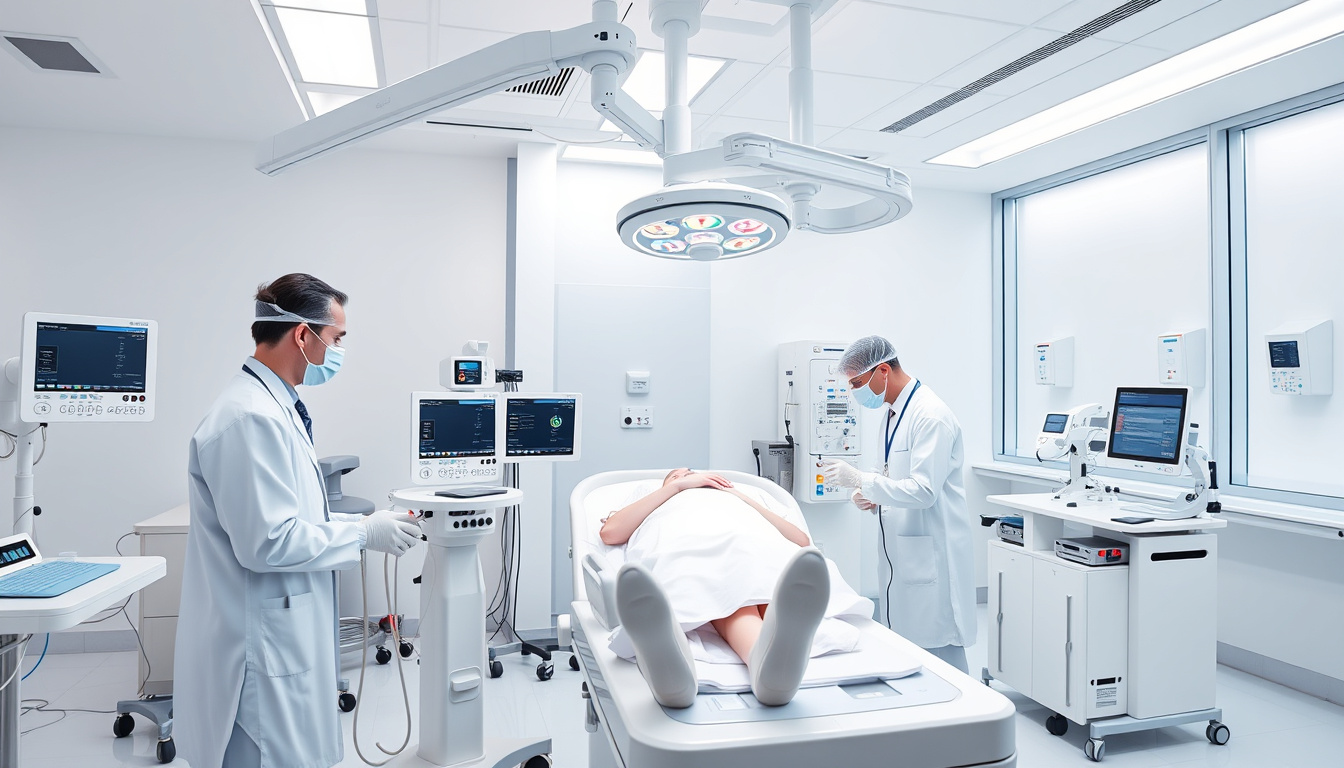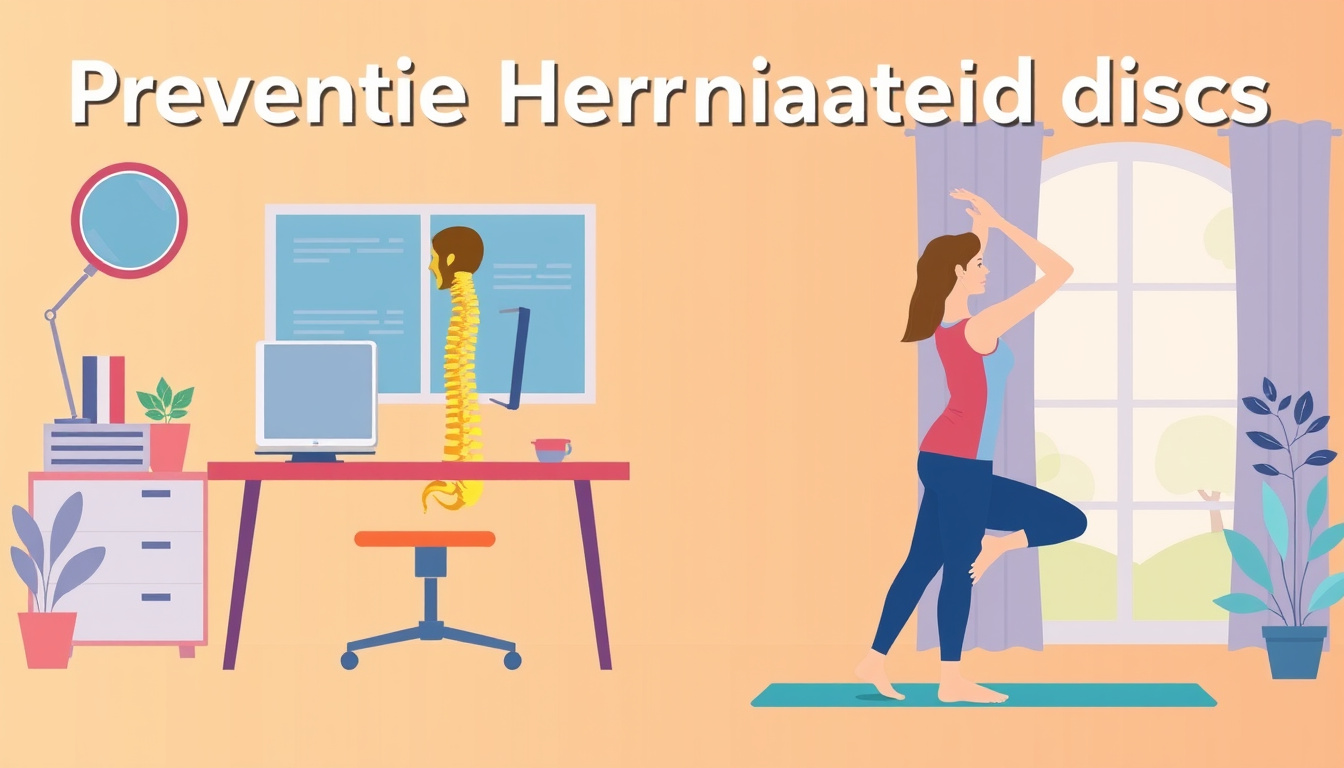
20 Apr Effective Herniated Disc Treatment: Top Strategies for Pain Relief and Recovery
Herniated discs can be a significant source of discomfort and pain, affecting both your physical activity and overall quality of life. Understanding the best herniated disc treatment options is crucial for effective pain management and recovery. In this article, we will delve into the causes and symptoms of herniated discs, explore conservative treatment alternatives, advanced therapies for severe cases, and suggest lifestyle changes and preventive measures to help mitigate the risk of recurrence. Whether you’re dealing with a recent diagnosis or seeking information to support a loved one, our comprehensive guide will equip you with the knowledge to pursue an effective treatment strategy.

Key Takeaways
- Herniated discs can cause significant pain and discomfort due to various causes and symptoms.
- Conservative treatment options include physical therapy, medication, and lifestyle modifications.
- For severe cases, advanced therapies such as injections or minimally invasive procedures may be necessary.
- Implementing lifestyle changes can greatly aid in the recovery process from a herniated disc.
- Surgical intervention should be considered only when conservative treatments fail to provide relief.
Understanding Herniated Discs: Causes and Symptoms
A herniated disc occurs when the soft cushion between the vertebrae in your spine—the discs—becomes damaged or displaced. This condition can result from a variety of factors such as aging, injury, or excessive physical strain. As time progresses, the discs may lose hydration and elasticity, making them more susceptible to herniation. Common symptoms include sharp pain, numbness, or weakness in the limbs, which arise when the protruding disc presses on the surrounding nerves. Additionally, individuals may experience discomfort in their back, particularly when performing certain movements. Understanding these causes and symptoms is crucial, as it paves the way to effective herniated disc treatment options. Early diagnosis can significantly impact recovery time and improve the overall quality of life.
Conservative Treatment Options for Herniated Discs
When navigating the landscape of herniated disc treatment, conservative options often serve as the first line of defense before considering invasive procedures. These approaches focus on alleviating pain and promoting healing through non-surgical methods. Common conservative treatments include physical therapy, which involves personalized exercise regimens tailored to strengthen the back and improve flexibility. Additionally, over-the-counter pain medications such as NSAIDs can offer relief from discomfort. Chiropractors may employ spinal manipulation techniques to relieve pressure on nerves, while acupuncture has gained traction among many as a holistic approach to pain management. Using a combination of lifestyle adjustments, such as maintaining a healthy weight and practicing good posture, can also be pivotal in managing symptoms of a herniated disc. For many, these conservative strategies not only enhance their quality of life but may significantly reduce the necessity for surgical interventions.
‘The human body is the best picture of the human soul.’ – Ludwig Wittgenstein

Advanced Therapies and Procedures for Severe Cases
When it comes to severe cases of herniated disc treatment, advanced therapies and procedures can offer significant relief and improve quality of life. For patients experiencing debilitating pain, electric stimulation therapy can assist in muscle relaxation and pain management by targeting the affected area with low-voltage electrical currents. Additionally, spinal injections involving corticosteroids can effectively reduce inflammation and pain around the herniated disc, providing temporary relief that may allow individuals to engage in physical therapy. For those who do not respond to conservative treatments, surgical options such as microdiscectomy or laminectomy have proven successful in alleviating pressure on nerves. These advanced herniated disc treatments not only aim to manage pain but also strive to restore mobility and enhance overall functionality, ultimately helping patients return to their daily activities with greater ease.
Lifestyle Changes to Aid Recovery from Herniated Discs
Recovering from a herniated disc can be a challenging journey, but making specific lifestyle changes can significantly aid in the healing process. First and foremost, incorporating regular, low-impact exercises, such as swimming or walking, can enhance flexibility and strengthen the muscles supporting your spine. This, combined with maintaining a healthy weight, reduces the strain on your back, which is crucial for effective herniated disc treatment. Additionally, practicing good posture throughout your daily activities not only alleviates pressure on your spine but also promotes long-term spinal health. Furthermore, incorporating ergonomics into your workspace can help prevent future injuries. Adequate rest and sleep are equally important; investing in a suitable mattress can support your back and improve recovery time. Lastly, staying hydrated and consuming a balanced diet rich in anti-inflammatory foods can also play a vital role in optimizing your recovery from a herniated disc. By adopting these lifestyle changes, you can enhance your overall well-being and facilitate a more effective recovery.

Preventive Measures to Avoid Future Herniated Discs
Herniated discs can lead to a great deal of discomfort and pain, making it essential to take preventive measures to avoid their occurrence in the future. To effectively implement herniated disc treatment, it is crucial to focus on strengthening the muscles that support the spine. Engaging in regular physical activity, including core strengthening exercises, yoga, and proper stretching techniques, can significantly enhance spinal stability. Additionally, maintaining good posture while sitting and standing can reduce the strain on the spine, minimizing the risk of disc herniation. Furthermore, it is advisable to avoid heavy lifting or twisting movements, and if necessary, use proper lifting techniques, such as bending at the knees instead of the waist. Incorporating ergonomic furniture and tools can also support spinal health, while regularly maintaining a healthy weight will help alleviate excess pressure on the discs. By adopting these strategies, individuals can greatly reduce their risk of experiencing herniated discs in the future.
When to Consider Surgical Intervention for Herniated Discs
When it comes to herniated disc treatment, understanding the right timing for surgical intervention is crucial. Typically, conservative approaches—such as physical therapy, medication, and lifestyle modifications—are the first line of defense against the discomfort caused by herniated discs. However, there are specific scenarios where surgical options should be considered. If you experience persistent pain that significantly affects your daily activities or if conservative treatments have failed after several weeks, it may be time to consult a specialist. Additionally, if neurological symptoms arise, such as loss of reflexes, numbness, or weakness in the limbs, surgical intervention could prevent further complications. Ultimately, a thorough assessment and discussion with a healthcare professional can help determine the most appropriate herniated disc treatment tailored to your unique condition.

Sorry, the comment form is closed at this time.